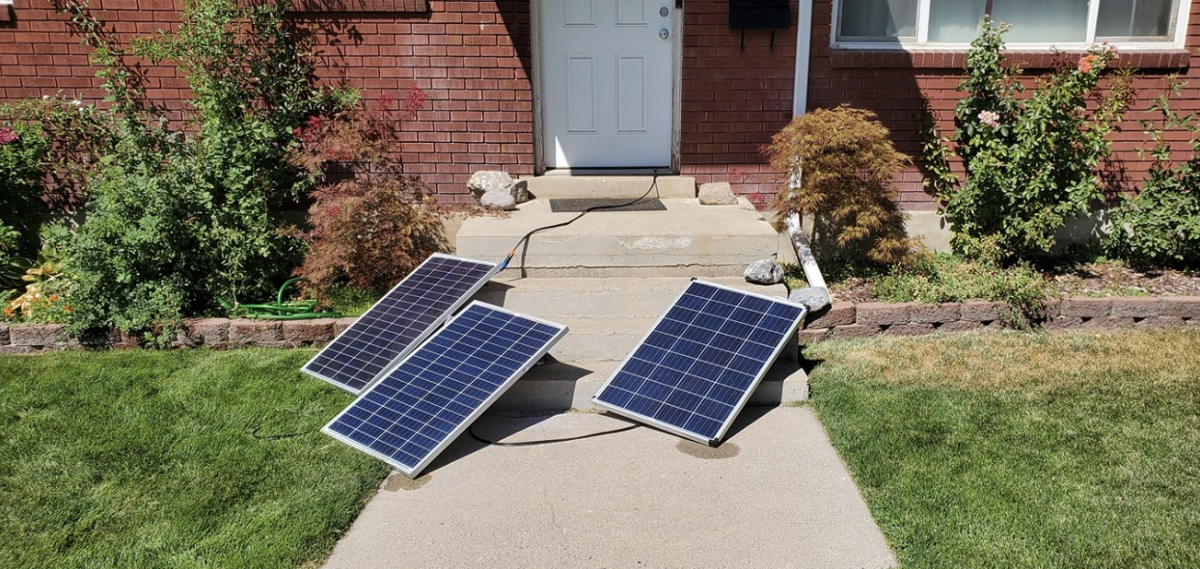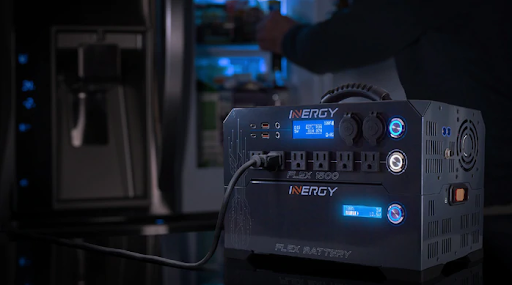
In 2021, Zac Blume, chief technology officer at Inergy, a solar generator manufacturer, was an early adopter of the Bantam Tools Desktop CNC Milling Machine.
Blume’s been using the desktop CNC milling machine to prototype components including circuit boards, PVC cable overmold injection molds, and heatsinks. He purchased the machine to gain more rapid prototyping capabilities in his remote workshop.
Blume said that Inergy is on a mission to bring power to parts of the world that don’t yet have access to it.

Inergy is a portable solar generator company that makes battery packs, inverters, solar chargers, and solar panels. “We focus on ease of use, simplicity, and functionality,” Blume said. “I think there’s no better way to improve someone’s life than by bringing them useful, sustainable, and affordable energy. Nothing seems to improve third world countries and communities better than the advent of power in their lives.”
Personally, Zac is driven by his passion for technology and how there’s always something new and interesting happening in the space. Being able to innovate and push groundbreaking ideas forward is one of the big reasons Blume was drawn to Inergy. It’s also one reason he utilizes the Bantam Tools Desktop CNC Milling Machine and digital fabrication tools like it in his shop.
“I have a dream to be able to create, invent, and prototype almost anything I want at home. I have an ever-growing array of tools, 3D printers, CAD software, and CNC equipment (laser cutter, mill, plasma cutter).”
When he’s not in the office at Inergy, Blume works out of his home workshop where he operates 3D printers and the Bantam Tools Desktop CNC Milling Machine. He typically machines PCBs and aluminum parts the same day he designs them.
To prototype concepts even quicker, HE leans on powerful features like the built-in probing routines and 2.5D autoCAM in the Bantam Tools Milling Machine Software. “Get to know the SVG support,” he advises other users. “You can do a lot of work with this feature without having to deal with CAM software, and it’s way faster in terms of getting a usable part if you’re working on a 2.5D design.”
Additionally, because he’s doing a ton of PCB work, he also upgraded to the subscription version of our software, so he’s able to directly import Gerber files (a 2D vector image file format that’s an industry standard for conveying information about a PCB) into the Bantam Tools software with ease. It’s just one more way he can maximize his time.
Being able to see, feel, and test concepts in-house makes a world of difference. Blume said that he and his team are in control of the prototyping and production process and circumvent the traditional prototyping route of sending out samples to machine shops or obtaining them from overseas.
This enables them to save hundreds to thousands of dollars, depending on the project they’re working on. They’re empowered to design, modify, and test in-house before sending their designs to an outside shop or vendor. With these digital fabrication tools at his disposal, he can save time, money, and strike whenever the creativity iron is hot.
Contact Details
Related Glossary Terms
- computer numerical control ( CNC)
computer numerical control ( CNC)
Microprocessor-based controller dedicated to a machine tool that permits the creation or modification of parts. Programmed numerical control activates the machine’s servos and spindle drives and controls the various machining operations. See DNC, direct numerical control; NC, numerical control.
- computer-aided design ( CAD)
computer-aided design ( CAD)
Product-design functions performed with the help of computers and special software.
- computer-aided manufacturing ( CAM)
computer-aided manufacturing ( CAM)
Use of computers to control machining and manufacturing processes.
- gang cutting ( milling)
gang cutting ( milling)
Machining with several cutters mounted on a single arbor, generally for simultaneous cutting.
- milling
milling
Machining operation in which metal or other material is removed by applying power to a rotating cutter. In vertical milling, the cutting tool is mounted vertically on the spindle. In horizontal milling, the cutting tool is mounted horizontally, either directly on the spindle or on an arbor. Horizontal milling is further broken down into conventional milling, where the cutter rotates opposite the direction of feed, or “up” into the workpiece; and climb milling, where the cutter rotates in the direction of feed, or “down” into the workpiece. Milling operations include plane or surface milling, endmilling, facemilling, angle milling, form milling and profiling.
- milling machine ( mill)
milling machine ( mill)
Runs endmills and arbor-mounted milling cutters. Features include a head with a spindle that drives the cutters; a column, knee and table that provide motion in the three Cartesian axes; and a base that supports the components and houses the cutting-fluid pump and reservoir. The work is mounted on the table and fed into the rotating cutter or endmill to accomplish the milling steps; vertical milling machines also feed endmills into the work by means of a spindle-mounted quill. Models range from small manual machines to big bed-type and duplex mills. All take one of three basic forms: vertical, horizontal or convertible horizontal/vertical. Vertical machines may be knee-type (the table is mounted on a knee that can be elevated) or bed-type (the table is securely supported and only moves horizontally). In general, horizontal machines are bigger and more powerful, while vertical machines are lighter but more versatile and easier to set up and operate.
- milling machine ( mill)2
milling machine ( mill)
Runs endmills and arbor-mounted milling cutters. Features include a head with a spindle that drives the cutters; a column, knee and table that provide motion in the three Cartesian axes; and a base that supports the components and houses the cutting-fluid pump and reservoir. The work is mounted on the table and fed into the rotating cutter or endmill to accomplish the milling steps; vertical milling machines also feed endmills into the work by means of a spindle-mounted quill. Models range from small manual machines to big bed-type and duplex mills. All take one of three basic forms: vertical, horizontal or convertible horizontal/vertical. Vertical machines may be knee-type (the table is mounted on a knee that can be elevated) or bed-type (the table is securely supported and only moves horizontally). In general, horizontal machines are bigger and more powerful, while vertical machines are lighter but more versatile and easier to set up and operate.
